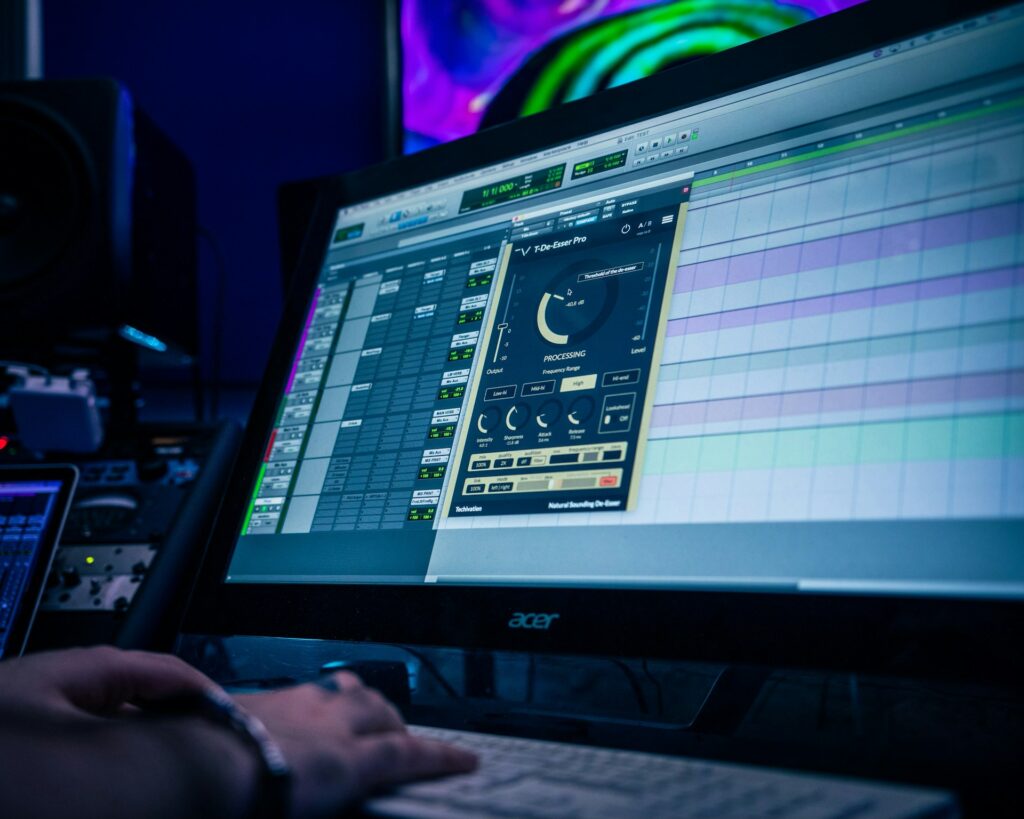Digital audio workstations (DAWs) have been around for decades. Some basic programs were used in the 1970s and 1970s. However, with advancements in digital technology, the use of DAW software grew massively in the 2000s and 2010s thanks to professional-grade products like Apple’s Logic Pro X and cutting-edge upgrades to well-established names like FLStudio, Cubase, and Ableton Live.
DAWs have revolutionised the way music is produced, recorded, and mixed, empowering musicians and producers to explore their creativity in unprecedented ways. Their evolution has continued in recent years to the point we now have feature-rich digital audio workstations developed on smaller but no less intuitive and functional scales for tablets and mobile devices such as Apple’s GarageBand and the freemium software BandLab.

Apps Like Apple’s GarageBand Are Putting Music Production Into the Hands of All
GarageBand is one of the leading apps for mobile users. It offers a range of features that make it a standout option, especially for beginners. Indeed, its Smart Instruments allow anyone, even those with very little musical ability, to create complex tracks.
Despite being free, it boasts a surprisingly powerful DAW experience, mirroring the more advanced Logic Pro from Apple in many ways. Users can record, mix, and edit up to 255 tracks with ease, thanks to its intuitive interface and built-in tools which allow for real-time sound shaping and groove adjustment.
GarageBand also supports a wide variety of instruments and includes producer packs with royalty-free sounds from top industry professionals. It offers 25 amps, 35 stompboxes for guitar and bass players, and thousands of Apple Loops for various genres.
In 2024, there are a growing number of competitors now in the market. BandLab is one of the best alternatives, for example. These apps, as well as others like Magix Music Maker, Roland Zenbeats, and Audiotool, indicate the growing shift from traditional music studio recording to the full suite of features being packed inside a single mobile device.
The Mobile Digital Revolution Can Be Seen in Many Walks of Life
We’re more and more used to carrying out tasks through our mobile devices. From banking to shopping to playing games and watching TV, it can all be done with a single smartphone. However, having access to a music studio and being able to create original tracks from the palm of our hand is one of the more fascinating innovations.
In 2024, there are countless apps transforming activities, previously only possible in dedicated physical spaces or with expensive hardware, into popular digital alternatives accessible with just a smartphone. Like GarageBand turning the music studio into a single app, Kinemaster has given amateur filmmakers all the tools they need to create professional-looking videos, for example.
Elsewhere, the award-winning Calm has brought mindfulness and wellbeing techniques out of the Yoga studio and into mobile devices, while Webtoon has swapped paper-based comic books for mobile “episodes” presented as scrollable vertical strips. It’s even possible to play scratchcards on a mobile device now with games such as Bun in the Oven, Squeaky Blinders, and Slice & Dice. Instead of scratching off a foil-based layer with a coin to reveal a potential prize, players instead rub the screen of their mobile device to unveil hidden symbols.
Democratising Creative Processes
The evolution of DAWs reflects a broader trend toward democratising creative processes through mobile technology. The once complex and costly world of music production has become increasingly accessible, thanks to intuitive apps like GarageBand and BandLab.
The rise of mobile DAWs mirrors broader digital transformations across various fields, from film and wellness to gaming and publishing. As technology continues to advance, we can expect even more opportunities for creative expression and innovation, all from the palm of our hands.




